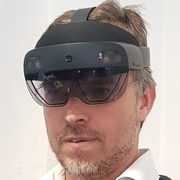Technologies for Virtual and Augmented Reality Applications
A special issue of Technologies (ISSN 2227-7080). This special issue belongs to the section "Information and Communication Technologies".
Deadline for manuscript submissions: closed (20 December 2018) | Viewed by 9641
Special Issue Editor
Interests: mixed reality; industrial applications; technical training; user studies
Special Issues, Collections and Topics in MDPI journals
Special Issue Information
Dear Colleagues,
Virtual and Augmented Reality technologies are evolving at a very fast pace in terms of display quality and ergonomics, ease of use, interaction design, and software tools and algorithms. Therefore, AR/VR applications from research laboratories will soon be ubiquitous, and they will deliver benefits in many fields, like maintenance, training, marketing, tourism, medicine, and many others to come. However, there are many research challenges to be addressed, like the lack of well established guidelines, human factors, usability, cybersickness, and social and cognitive aspects.
This Special Issue is intended to report on the latest innovations in the application of technologies to Virtual and Augmented Reality applications. Both practical and theoretical papers are welcome, as well as case studies and innovative multidisciplinary applications.
Topics of interest include, but are not limited to:
- Innovative Virtual and Augmented Reality applications
- Case studies and user experience reports
- AR/VR design guidelines and implementation of future standards
- Human–computer interface design, solutions, and challenges
- Performance comparisons and implications of traditional processes versus VR/AR counterparts
- Innovative AR/VR devices, approaches, and algorithms
- Cybersickness and ergonomics in AR/VR
Assoc. Prof. Michele Fiorentino
Guest Editor
Manuscript Submission Information
Manuscripts should be submitted online at www.mdpi.com by registering and logging in to this website. Once you are registered, click here to go to the submission form. Manuscripts can be submitted until the deadline. All submissions that pass pre-check are peer-reviewed. Accepted papers will be published continuously in the journal (as soon as accepted) and will be listed together on the special issue website. Research articles, review articles as well as short communications are invited. For planned papers, a title and short abstract (about 100 words) can be sent to the Editorial Office for announcement on this website.
Submitted manuscripts should not have been published previously, nor be under consideration for publication elsewhere (except conference proceedings papers). All manuscripts are thoroughly refereed through a single-blind peer-review process. A guide for authors and other relevant information for submission of manuscripts is available on the Instructions for Authors page. Technologies is an international peer-reviewed open access monthly journal published by MDPI.
Please visit the Instructions for Authors page before submitting a manuscript. The Article Processing Charge (APC) for publication in this open access journal is 1600 CHF (Swiss Francs). Submitted papers should be well formatted and use good English. Authors may use MDPI's English editing service prior to publication or during author revisions.
Keywords
- Virtual and Augmented Reality
- Mixed reality
- Human–computer interface design
- Human–computer interaction
- Cybersickness
- Ergonomics
- Case studies
- AR/VR devices and technologies
Benefits of Publishing in a Special Issue
- Ease of navigation: Grouping papers by topic helps scholars navigate broad scope journals more efficiently.
- Greater discoverability: Special Issues support the reach and impact of scientific research. Articles in Special Issues are more discoverable and cited more frequently.
- Expansion of research network: Special Issues facilitate connections among authors, fostering scientific collaborations.
- External promotion: Articles in Special Issues are often promoted through the journal's social media, increasing their visibility.
- e-Book format: Special Issues with more than 10 articles can be published as dedicated e-books, ensuring wide and rapid dissemination.
Further information on MDPI's Special Issue polices can be found here.





